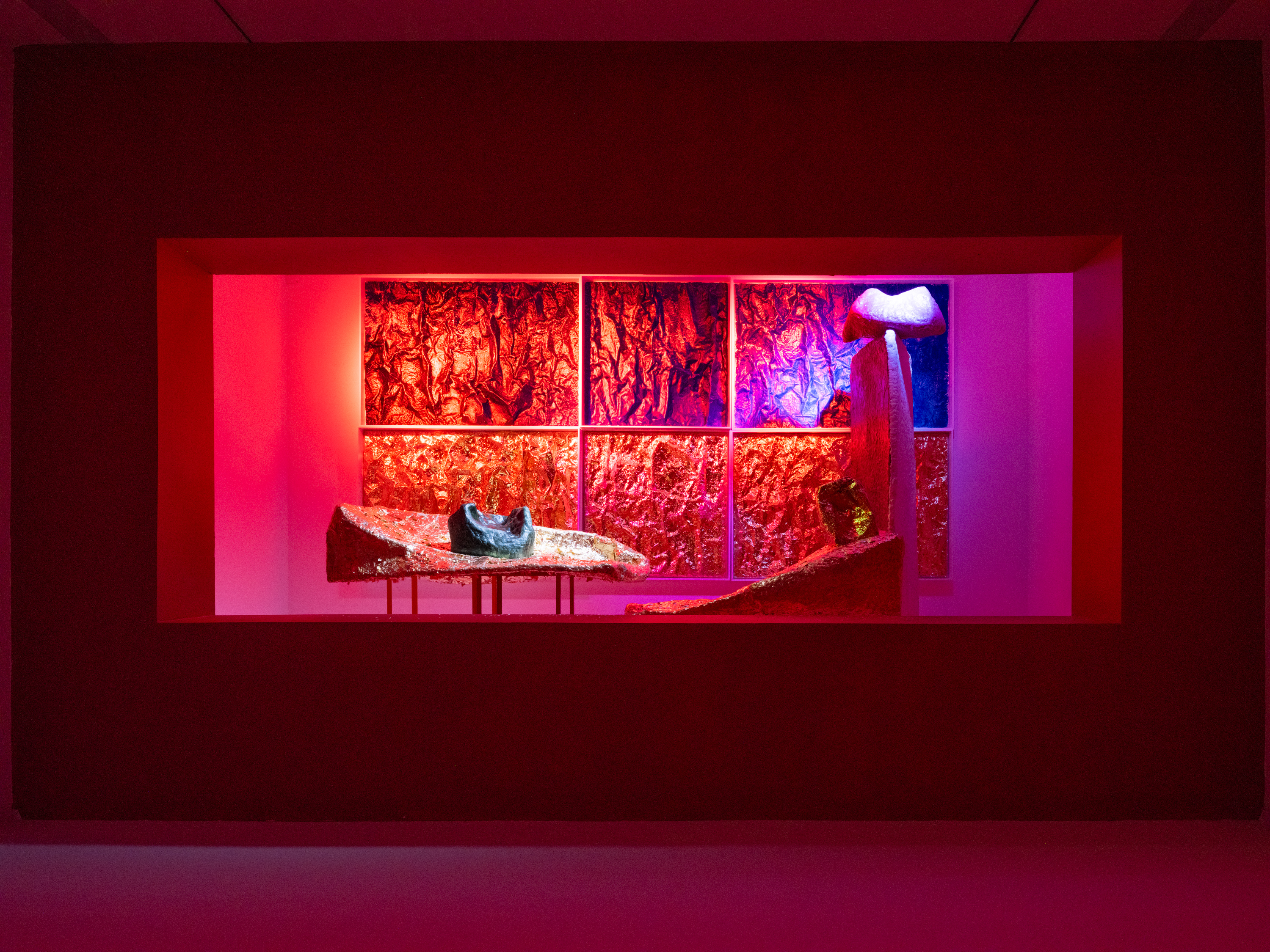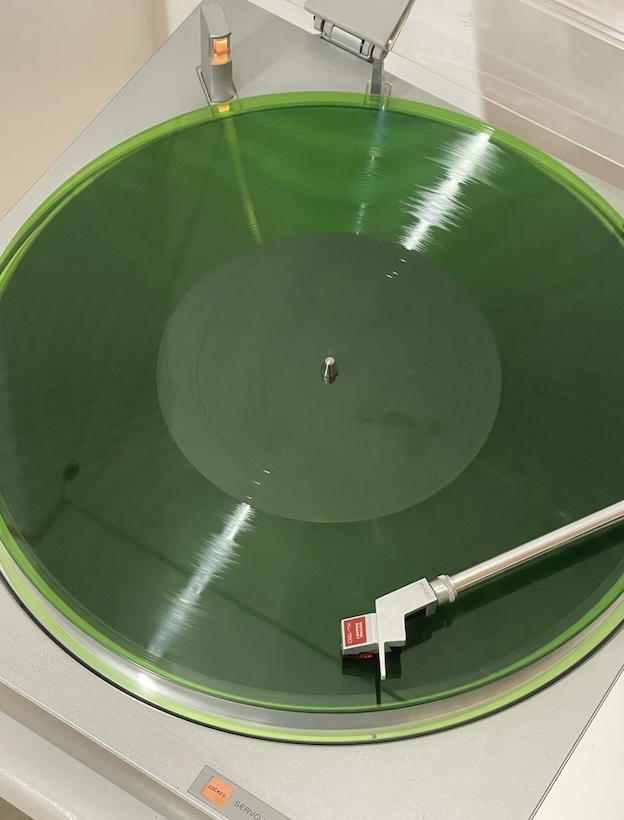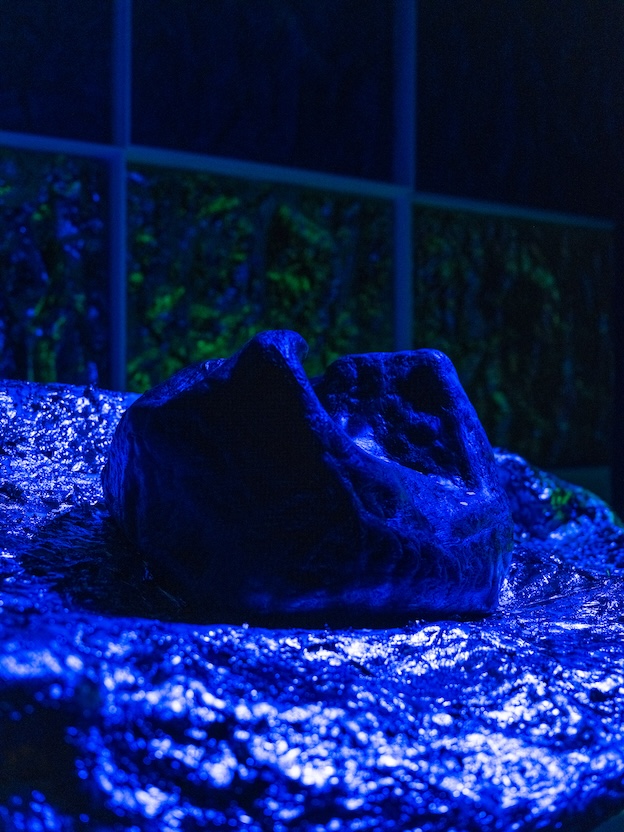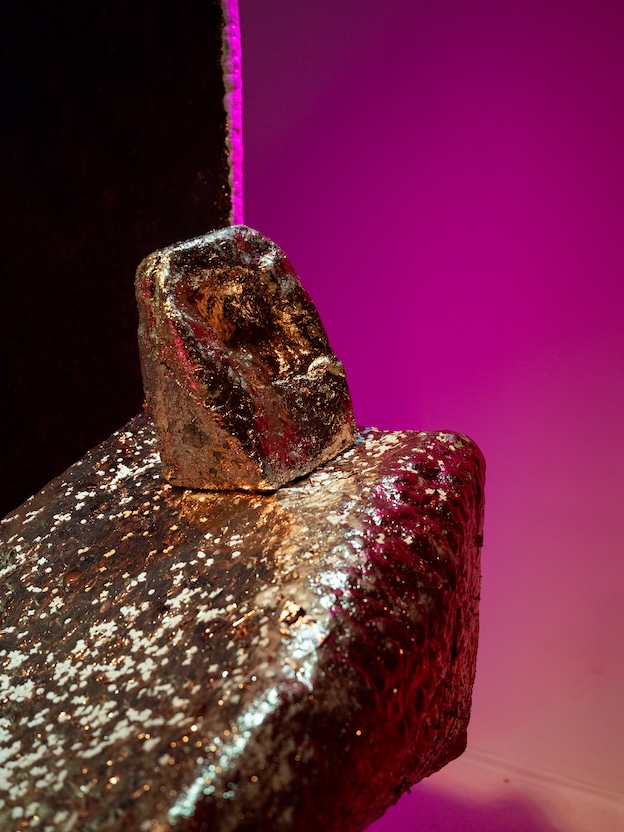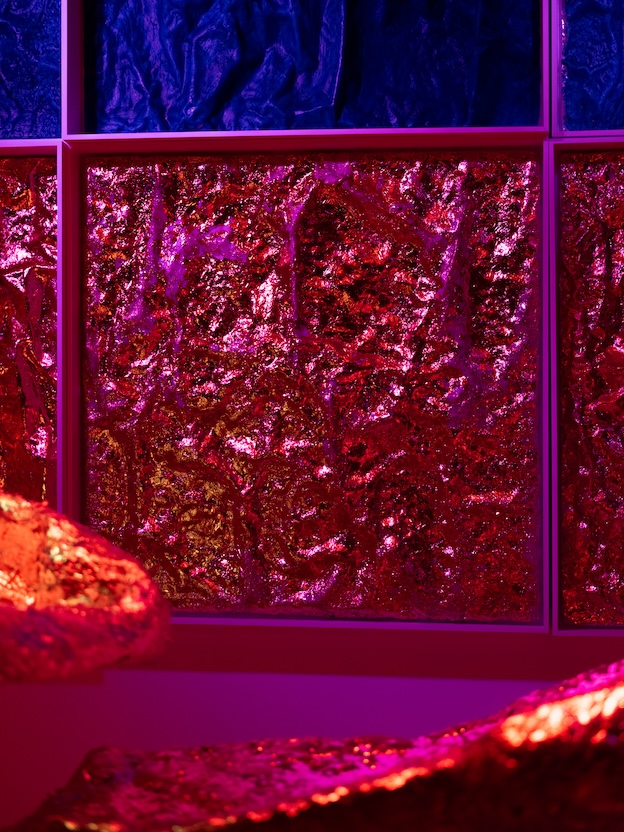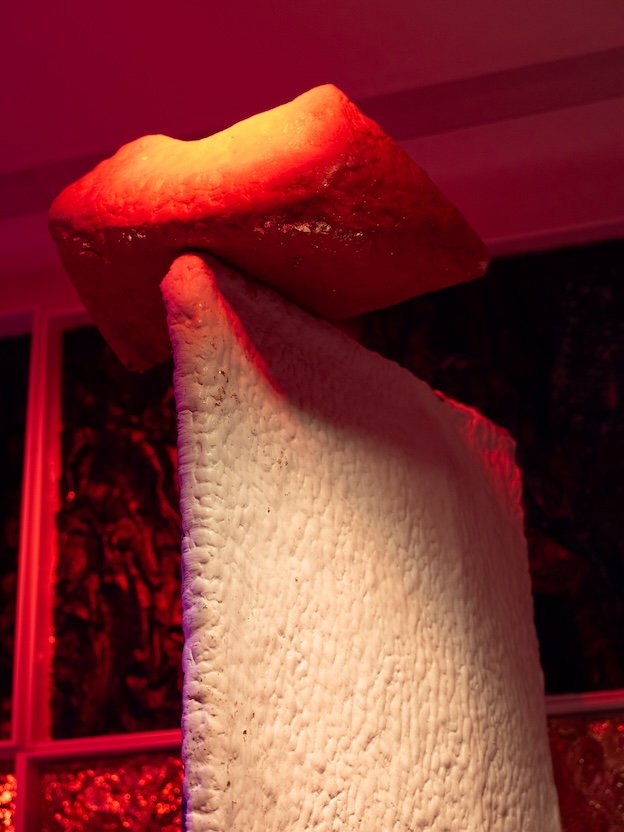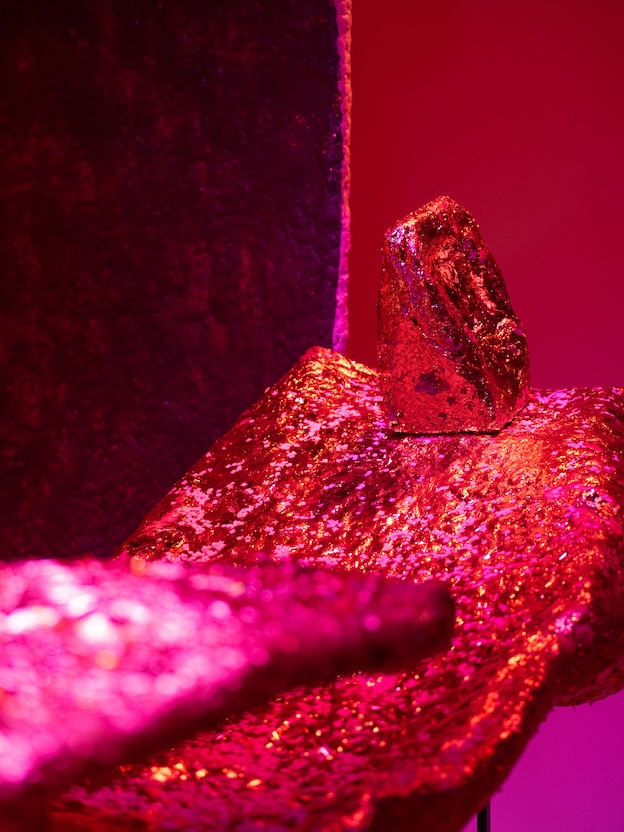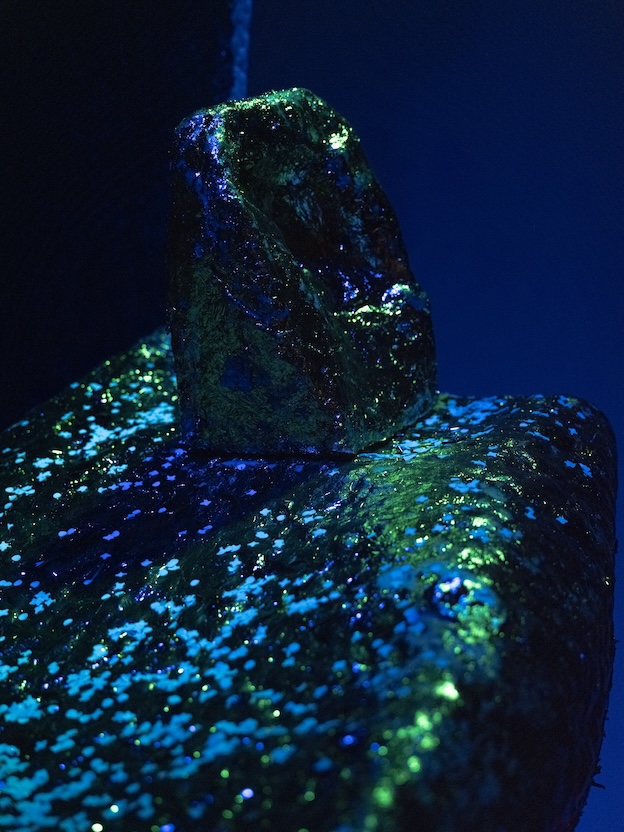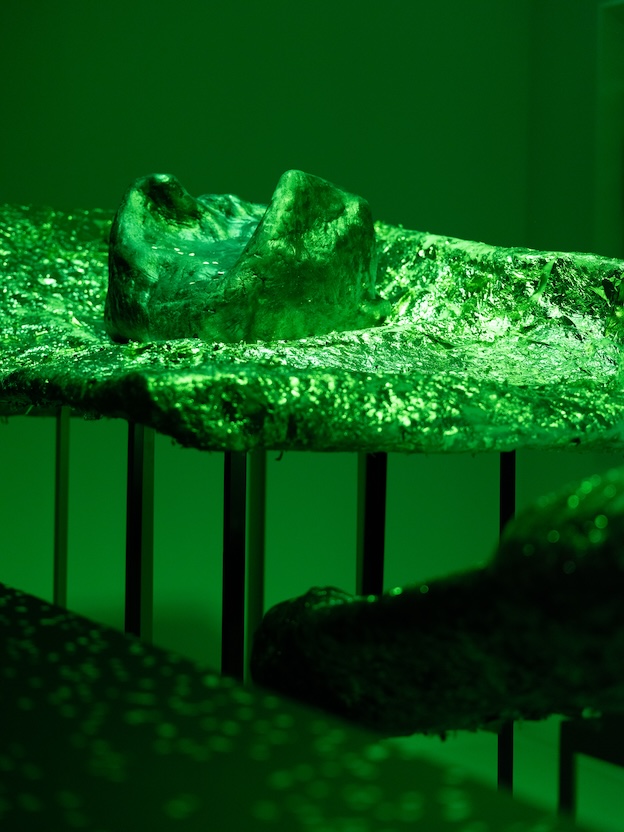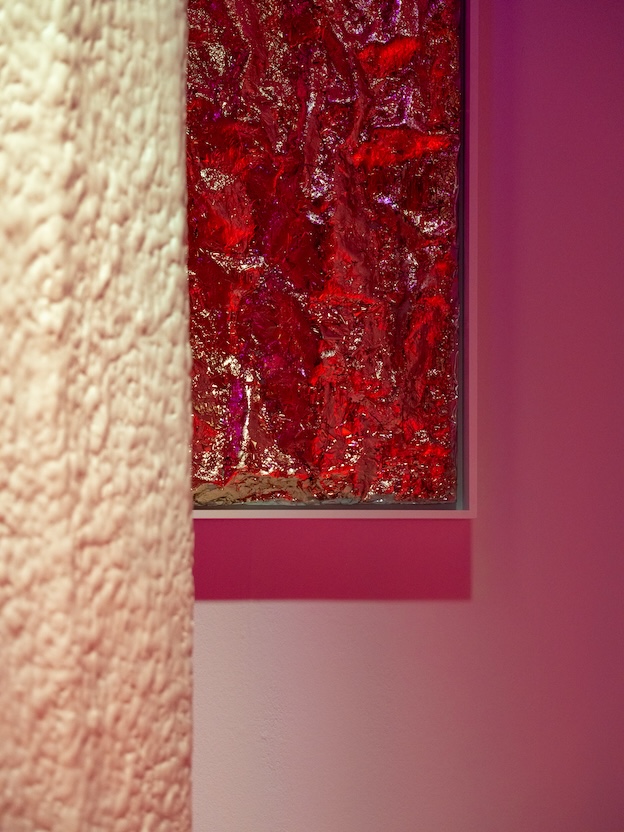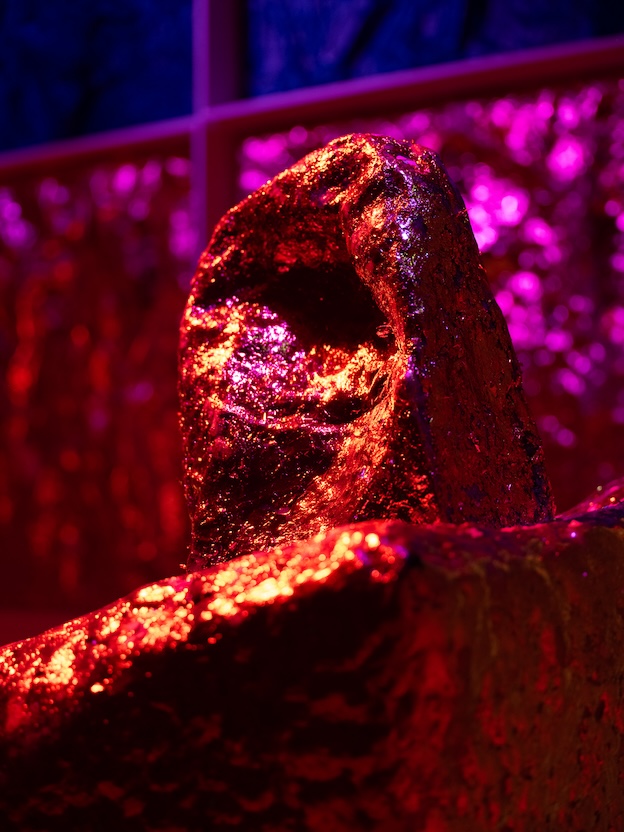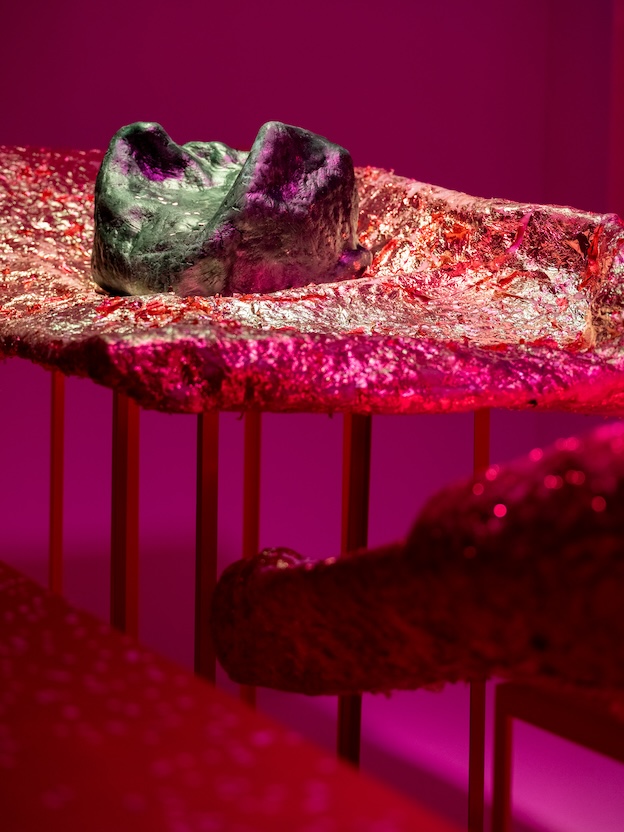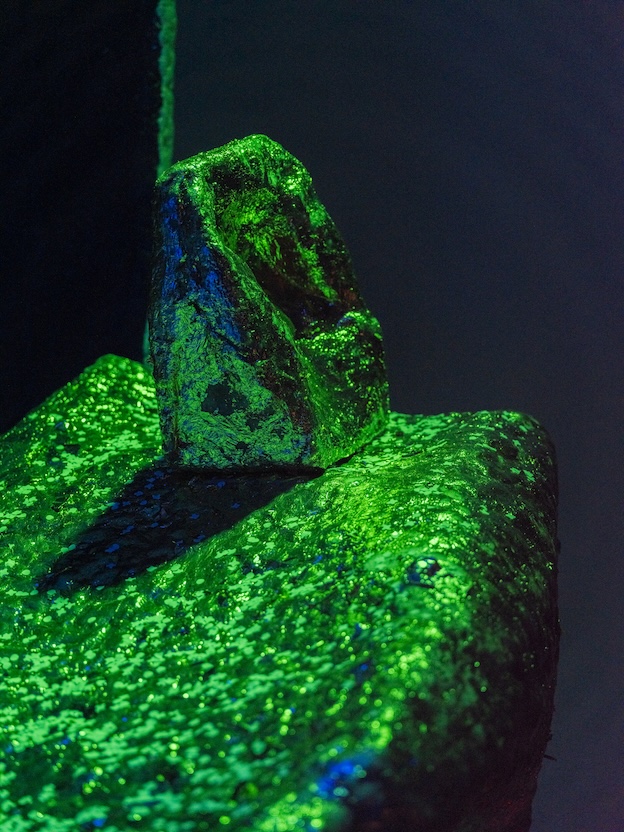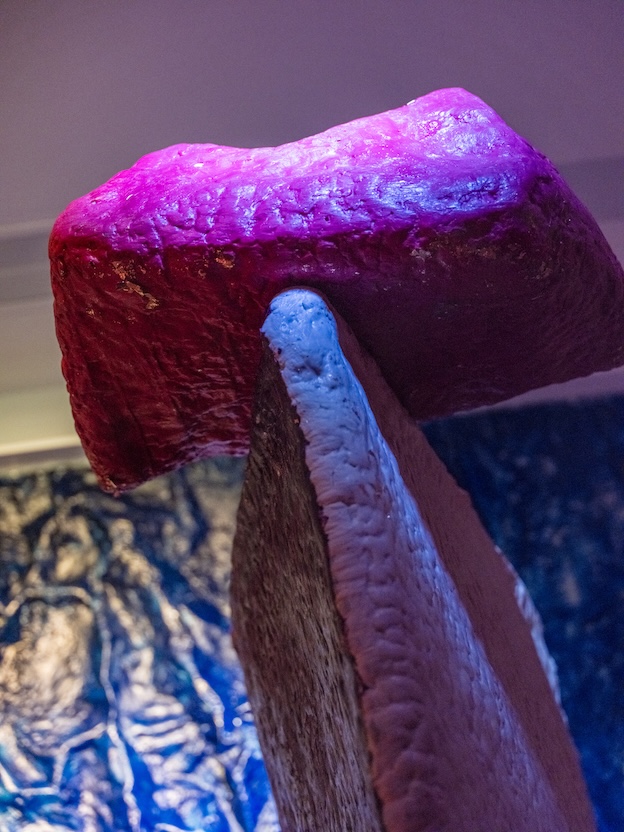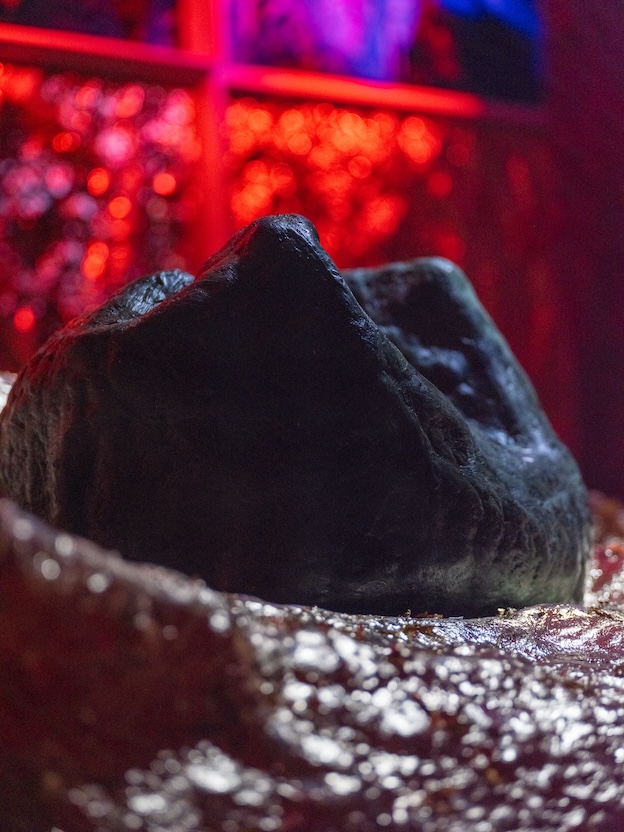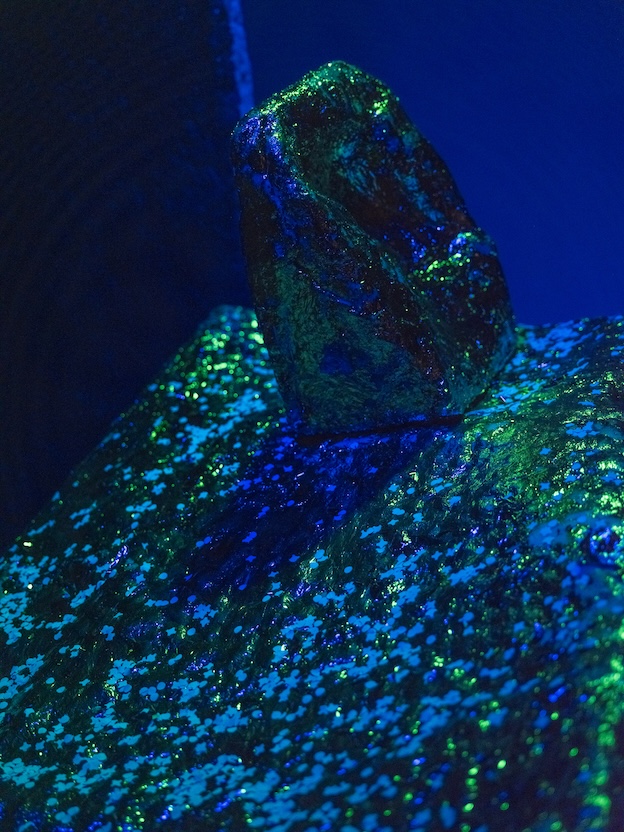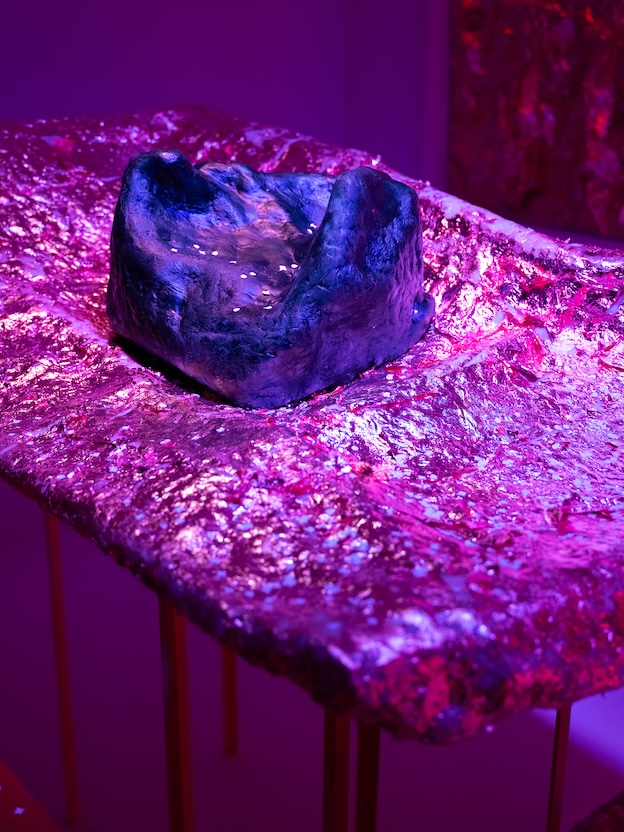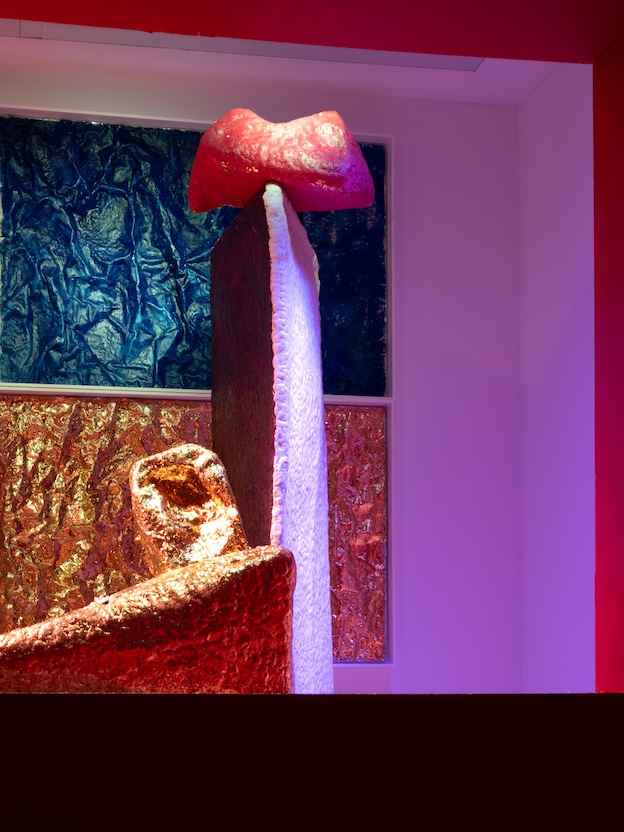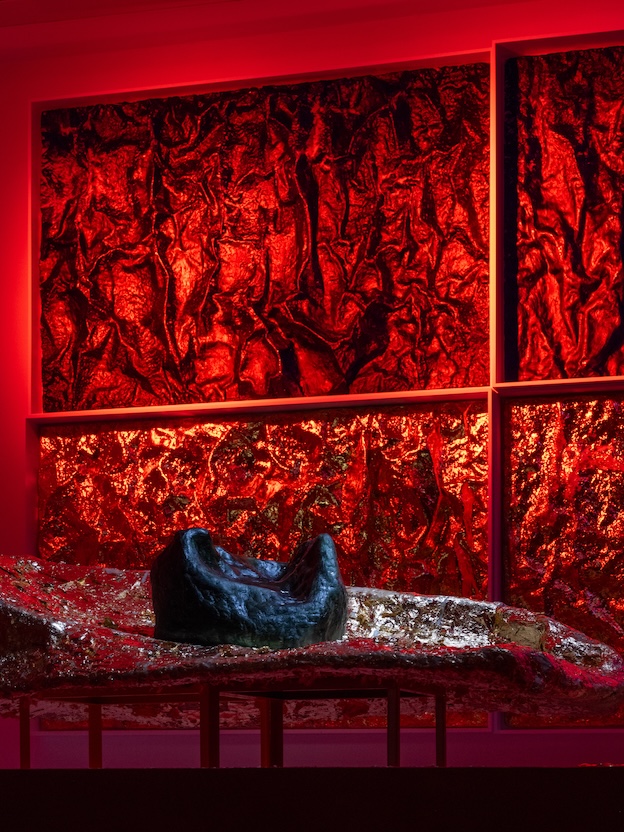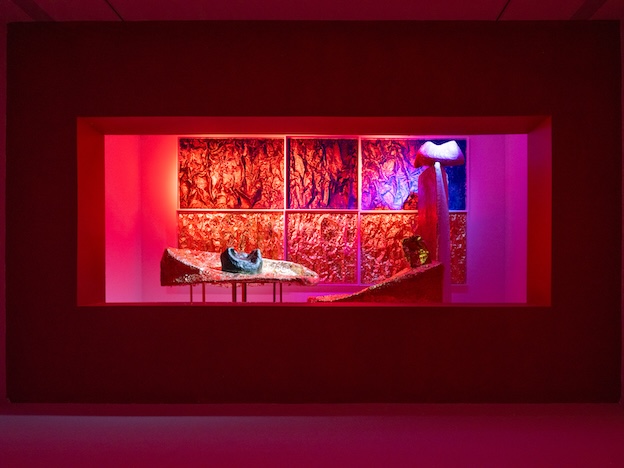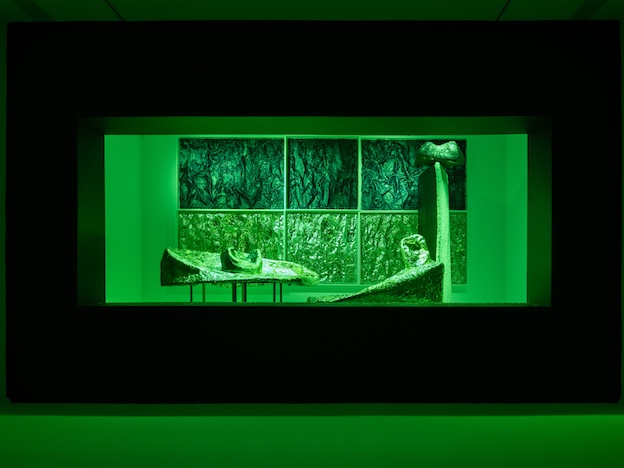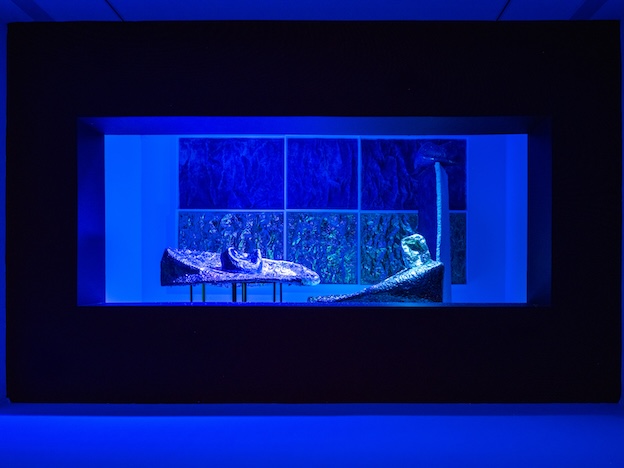Hunting for Love
Galerie Foksal, Varsovie, Pologne, 2024
Commissaire : Katarzyna Krysiak
Musique: Wojciech Puś
Galerie Foksal, Varsovie, Pologne
Text uniquement en anglais ci-dessous
Joanna Zielinska
Presence and vitality
Theater is often defined by presence and vitality. Its absence is one of the greatest provocations in traditional performance. In his landmark book based on his lectures, The Empty Space (1968), Peter Brook provided a definition that inspires experimental theater: “I can take any empty space and call it a bare stage,” he wrote. “A man walks across this empty space whilst someone else is watching him, and this is all that is needed for an act of theater to be engaged.” Brook’s book had a profound impact on theater practitioners and researchers alike, challenging traditional notions of theater and encouraging experimentation and innovation by focusing on the essential elements of performance.
A year after the publication of The Empty Space, Samuel Beckett invalidated Brook’s central thesis, writing Breath, a 30-second performance without human participation. Lights flare on a stage full of clutter – inhale, exhale – and the lights go out. When Kenneth Tynan added a chorus of naked bodies to the scene, Beckett threatened a lawsuit.
Since then, various artists have taken up the challenge of creating theater without an actor, introducing various forms of stage presence. The theatrical experiments of the late 1960s had a significant impact on the visual arts, especially on artists who created happenings and a new language of theater that challenged basic assumptions, such as the actor’s role and the traditional division between stage and audience. These artists included Polish director and visual artist Tadeusz Kantor.
So when does theater happen? How much can absence itself become presence? In the latest series of works created by visual artist Angelika Markul, this is one of the guiding themes. Her new experimental visual language brings her closer to theater than ever before, although the question of presence has been important in her art from the very beginning: from her early film My Nature (2005) showing an unusually fast-growing exotic plant, to later installations such as Bambi in Chernobyl (2014), Excavations of the Future (2016) and Goolarabooloo (2021) – works that show traces, speculative scenarios and, as a result of an ecological disaster, places devoid of human presence.
About emotions
The protagonists of Markul’s latest works are light, sound, falling artificial snow and emotions. Recorded voices of birds at dawn and piano sounds bounce off the walls of the gallery filled with abstract sculptures. It is the alphabet of love: lips, backs, skin. A disembodied voice sometimes floats in the space. We observe theater without actors, in a sense, art without performers. Absence is transformed here into action.
Time is a key element in Markul’s work. Aside from continuing themes such as memory, decay or cycles of life, there are new links between the real and fiction. The artist develops alternative myths and narratives, this time moving away from the combination of science and fiction, focusing on human existence. Angelika Markul’s works are created increasingly closer to her intimate history. The sculptures in the 7306 Days with Liberté series (2022) and the installation O, Lie on Me (2023), presented at Leto Gallery, are good examples.
In 7306 days with Liberté, Markul first addressed the subject of her private, personal sphere. The titular number represents the number of days she spent with her partner before he passed away. Each sculptural head reflects one day of their relationship. The work is a kind of dialogue with everyday life, the monotony and uniqueness of life at the same time.
The latest installation assembled at Foksal Gallery in Warsaw under the title Hunting for Love, continues the search for a new visual language, developing paratheatrical and autofictional themes. The strategy of creating speculative scenarios, characteristic of earlier works, is used here to narrate emotions.
Snow like a touch
Angelika Markul’s new artistic alphabet is surprising with its form. An example is a sculpture made of artificial snow: it is fairytale-like, unreal, forming over time. The ephemeral form changes its shape throughout the exhibition. Time plays an extremely important role in the artist’s work. In Hunting for Love, falling snow measures hours and days. Markul says that “snow is like a touch, like a brush of a hand on the skin, like a gesture of care.” It symbolizes a moment of clarity, renewal, as well as distance and emotional frigidity.
Feelings and subjective sensations combined with autobiographical elements are filtered through an expressive visual language, merging various forms of expression. Working mostly with natural materials such as wax, leather, felt and light, the latest multimedia work depicts amorous sensations, the flow of energy between two bodies, the touch of lovers. It is an emotional and hallucinatory journey into the depths of what is subconscious and unspoken in human relationships.
Paratheatricality and performativity
The installation transforms the gallery space into a unique paratheatrical event. Markul operates on the border between concreteness and abstraction. From her fascination with nature, minerals and natural forces, she moves on to explore human desire. In the creative process, she reaches for rough, vibrating, haptic forms that emerge from light itself, sounds or ephemeral sculptural forms. To enhance the theatrical effect, she adds gold, cobalt, green and magenta to the sculptural forms. What connects the two distinct worlds of Angelika Markul – the reality of the Anthropocene and the corporeal world – is the nature of the created space. The unifying element of the installations at Foksal Gallery is a musical piece composed by Wojciech Puś. A spatial, mesmerizing collage of sounds: the juxtaposition of birdsong at dawn with electronic music and vocals binds together the visual elements of the space. The viewer experiences Markul’s art with all their senses, immersing themselves in an orchestrated, phantasmagorical world with oppositions as its foundation. The artist often describes the human and nonhuman dimensions in her works, contrasting the artificial with the natural, form with formlessness, the world of speculative fiction with emotion and intuition. Hunting for Love was conceived as a performative space, composed of sculptures, paintings, music and light. These elements act as matter infiltrating from another, alchemical reality, where the components change their properties in real time.
In The Empty Space, Peter Brook writes about Holy Theatre, which explores the spiritual and transcendent aspects of human experience, while discussing how theater serves as a means to connect with deeper truths, offering viewers insights into the mysterious aspects of existence. Angelika Markul’s paratheatrical installation Hunting for Love is a kind of theater without an actor, or a space where viewers take on the role of performers. For the artist, as for Brook, the theatrical experience is a tool for exploring human nature and can be a means of both personal and social transformation.
Translated by Katarzyna Szuster-Tarda
